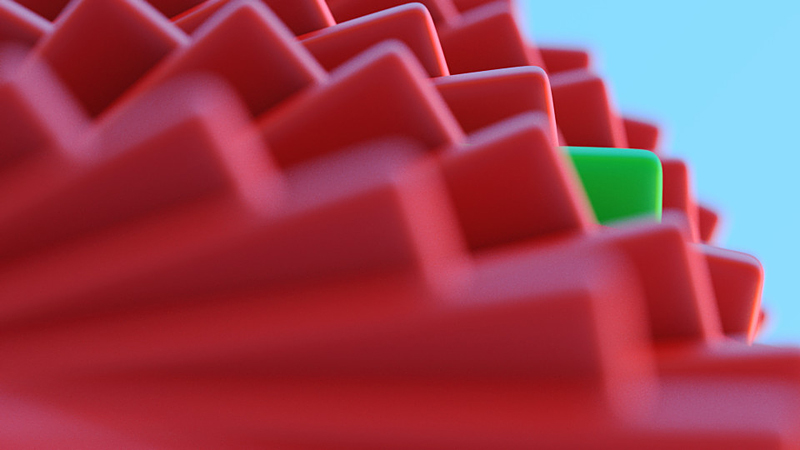Camera - common situations
Exposure - daylight vs artificial indoor lighting
It comes as a surprise to many Maxwell users not familiar with photography that their daylight camera settings produce a very dark rendering when using only common emitter values for indoor lighting and the same camera settings as the daylight render. The fact is daylight is a LOT stronger than normal indoor lighting but our eyes compensate for this difference and we see indoor lighting as bright as a normal sunny day. A camera however You might be tempted in this case to raise a lot the emitter strength to compensate but this is not recommended as you should always keep your emitter values within realistic values for typical artificial light. You should instead change the camera settings that affect exposure
Small objects in focus
Close to human vision
In many cases you may wish to present a product, especially furniture in a way that resembles how we would see it in real life - no perspective distortions or out of focus areas. In these cases use a pretty high F-stop so the whole object is in focus (f8 - f16) and a focal length of about 35-50mm which is considered a "normal" focal length. The human eye focal length is smaller than that (around 17mm) giving us a wider FOV, but because we tend to focus our attention selectively on a certain area we don't really observe the world as if we had wide angle lenses attached to our eyes.
Camera sensor size and Render resolution
There are two concepts that must be strictly related, and those are the camera sensor size (or film back size) and the render resolution, or more precisely the sensor size aspect ratio (the quotient of the horizontal film sensor size by the vertical film sensor size) and the render aspect ratio (the quotient of the render horizontal resolution by the vertical resolution).
In a real camera, the image size is a direct consequence of the sensor size itself, and so the image aspect ratio and the sensor aspect ratio are obviously equal .
But in a 3D program, you are free to have a render aspect ratio that differs from the camera sensor aspect ratio, which is incongruous for a physically correct camera. Because Maxwell works like a real camera, it forces the camera sensor to fit the render aspect ratio, causing a different framing in the render than what you have in your platform viewport.
Just check that your current camera sensor aspect ratio (by dividing the horizontal film sensor size by the vertical film sensor size, accessible from that camera Properties panel), is equal to the render aspect ratio (dividing the render horizontal resolution by the vertical resolution).
By making both aspect ratios equal you will get the correct behavior of your camera, and you will avoid any different framing between you 3D viewport and the rendered image.
